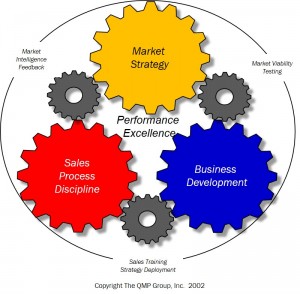The Product Development and Management Association Glossary of Terms defines failure rate as the percentage of a firm’s new products that make it to full market commercialization, but which fail to achieve the objectives set for them. By that measure, it is not surprising that a quick internet search on the subject of product failure rate yields studies that claim anywhere between 50% (commercial) and 90% (retail food) of new product or service offerings fail.
 Failure can mean some or all of lost time, wasted money, missed opportunity, damaged credibility, tainted brand reputation, enhanced competitive vulnerability, lost jobs, truncated careers and a host of other unpleasant outcomes. So, whether the real failure rate is closer to the lower (50%) or higher (90%) end of the estimate is not as important as recognizing that discovering ways to improve it is essential.
Failure can mean some or all of lost time, wasted money, missed opportunity, damaged credibility, tainted brand reputation, enhanced competitive vulnerability, lost jobs, truncated careers and a host of other unpleasant outcomes. So, whether the real failure rate is closer to the lower (50%) or higher (90%) end of the estimate is not as important as recognizing that discovering ways to improve it is essential.
For the past 15 years a good part of our work at QMP has centered around helping business-to-business clients turn around under-performing businesses and products. Many of them were struggling with getting new offerings off the ground or gaining traction in the marketplace. We’d like to share with you a bit about what we have learned, in hopes that it may improve your probability of success and help you avoid the myriad consequences of failure.
The Empirical Science Basis of the Adoption of Innovation:
In 1962, Everett M. Rogers wrote a breakthrough work entitled, “The Diffusion of Innovation” (republished in its fourth edition in 1995 by The Free Press). In it he compiled a number of studies documenting adoption successes and failures of all types of innovations over the past 100 years — from sociological to scientific. He included varied research findings, such as the struggles of the Chilean health department with getting Andes mountain villagers to adopt the habit of boiling water for health reasons, Iowa farmers adopting hybrid seed corn and Pittsburg school system principals adopting new math.
While the lessons learned from reading such a remarkable book are many, two items stand out above all others; 1) the adoption or diffusion of an innovation is not a linear phenomenon (meaning it does not gain its energy and momentum just one isolated customer at a time across a wide range of groups), and 2) adoption is significantly accelerated by the dynamics of the intramarket communication network (how buyers in a market or group meet, discuss and communicate ideas).
In fact, one of the most amazing conclusions coming from the research is that communication through the intramarket network is roughly 13 times more effective than mass communication in the adoption of an innovation. This interesting research conclusion predates the emergence of social media, blogging and Tweeting which, by now, are well recognized as an effective internet-powered intramarket communication vehicles.
Mass Communication and Struggles with Adoption
One of the most common problems we find with innovations struggling to gain a foothold in the marketplace is the parent firm’s unwillingness to focus. Rather than taking a chance on a focused launch initiative, they believe it’s better to try a broad one and see what sticks. In addition, the management team and product people are typically so convinced of the universal applicability of the innovation, that it leads the firm to believe that “getting our name out there” quickly, to masses of potential buyers, will be all that is required for success. This is rarely the case.
In pursuing such a course of action, it is not uncommon for a firm to find they have spent valuable economic resources on grand branding schemes and exposure initiatives with a minimal real impact on market penetration. Applying for a second round of dilutive funding to finance a second run at that same holy grail is an option—and some select it – with the same results.
Fragmenting the market to gain a profitable foothold
Buyers, particularly commercial and business-to-business buyers, invest in an innovation because they believe the economic value they will receive from that innovation will exceed the amount they have to pay for it. The market success of an innovation requires that the market which you’ve targeted has a significant enough proportion of customers with a big enough common problem to create a compelling argument for an investment to solve it. The key is, not all market segments have the same problem to the same degree. Focusing your launch on a particular sub-segment of the market where the economic value proposition of the innovation is compelling, creates a much higher probability of success than a broad approach.
If it’s that simple, why don’t more businesses focus?
There are many reasons: First, investors prefer firms that are moving after big markets with big payoffs. The bigger the market envisioned, the bigger the potential payout. Secondly, the inventors have a sincere belief that “everyone” can eventually use their innovation—and eventually they may be correct. Third, innovators and marketers alike get caught in the excitement, glitz and hype of launching a major market initiative launch. It can be a very heady experience. And, fourth, they simply have too much marketing money in the budget and don’t know how to manage it well.
Trying to stand in front of the innovation-launch train as a voice of reason, as it barrels down the track of a well-funded general market launch is fruitless. It’s best to wait till the train burns out its fuel and then catch up to it further down the track when it has stalled.
Not withstanding the previous explanations, there is a more fundamental reason why people don’t focus for success, they simply don’t know how to select the best markets to focus on.
Criteria for Target Market Attractiveness:
Over the years of working the challenge of assessing and selecting the target market segment that will yield the highest probability of success for an innovation, we have developed a series of criteria that seem to work effectively.
Market Momentum: Different market segments have different economic, demographic and regulatory factors which affect its basic momentum. When selecting a market, we want our investments to be lifted and propelled downstream as much as possible by inherent momentum factors in our favor.
Compelling Need: This factor refers to the extent the problem the innovation is designed to resolve is compelling from an economic, safety or regulatory standpoint. Take the Segway for example, the innovative two-wheeled, gyroscopically-balanced personal transport scooter. It’s general market launch, after much early hype, has been less than hoped for by investors and its inventors alike. It is, however, finding its way to higher success rates in mobile security markets, on campuses, malls, large commercial complexes, inner city tourism, and in a slightly modified version, golf courses.
Match: The extent to which the innovation matches and completely resolves the compelling need it was designed to fix. A perfect match will increase customer satisfaction and improve the ability of potential customers to rapidly make the innovation-to-problem-fix mental link.
In the early days of flat panel monitors, when they were expensive compared to bulky CRTs, one of our clients attempted to penetrate the general desktop market with this own version of a flat panel monitor. At a $1,000 selling price, compared to a $249 monitor price, the effort failed. However, when the effort was refocused on hospital rooms (a much smaller segment of the market but with a more compelling set of needs), the monitor was wildly successful. In hospital rooms, space is constrained, electromagnetic interference from CRTs cannot be tolerated around sensitive medical monitoring equipment and sparks from high static CRTs can’t be permitted in oxygen rich environments. The client’s initial adoption failure was turned to success simply by redirecting the market focus—and there were no changes required to either the average selling price or inherent product features. In fact, the selling price increased as, over time, hospitals requested additional features to increase the basic capabilities of an already good solution.
Socket Count: A socket is a potential place where the innovation can be installed. For example, a first estimate of the potential sockets for the microwave oven at its inception would have been the number of households without one. Today, the number of sockets available for new microwave oven innovations is going to be limited to those sockets that either don’t have a microwave already installed (very few) or those for which the innovation solves a compelling need or significant shortcoming with their existing solution.We want to find a market to target our innovation at that not only has a compelling need and positive momentum factors , but also a lot of unfilled or under-satisfied sockets.
Value Quotient: Closely related to the magnitude of the compelling need is the balance of the value quotient from the customer’s perspective. This relates to the value of the benefit to the customer of solving their problem with your innovation, divided by the cost of acquiring, installing, learning and using it. There may be a significant compelling need, but if the cost of the innovation needed to repair the compelling need is prohibitive, adoption will be slow. A rule of thumb is that within three years of purchase the innovation should pay back at least 5 to 1 in bottom line cash flow for the customer. A further note on this point: Value received is not completely economic. Value comprises the complete suite of benefits encompassed in the Economic, Emotional, Political and Physical realms of what your product/service delivers.
RPQL Position Availability: RPQL stands for Relative Perceived Quality Leadership. Forty plus years of research in the Strategic Planning Institute PIMS data base (Profit Impact of Market Strategy) indicates that the single most important factor affecting a business unit’s success is the market’s perception of the relative perceived quality of its goods and services compared to its competitors. One important point to remember—perceived quality is related to the segment of the market. Not all segments perceive quality in the same way. Charging after a market that already has an RPQL leader is equivalent of a military frontal assault on an entrenched position. Not a wise decision.
IntraMarket Network: As mentioned earlier, innovations diffuse more rapidly if there is a strong intra-market network through which the value proposition of the innovation can be communicated—person-to-person, customer-to-customer. The intra-market network comprises two parts a) its venues (events, forums) and vehicles (journals, publications, websites) and b) its intra-market opinion leaders.
Opinion leaders are the real geometric multipliers of the value proposition message. For opinion leaders to be most effective they need to have four important characteristics. First, they need to be rabid believers in the innovation and its value proposition. Secondly, they need to be well-networked. Third, they need to be highly credible in the network of interest and finally, they need to be natural sales people—anxious and completely un-shy about communicating new ideas to friends and colleagues alike.
The next five target market attractiveness assessment criteria are important as well, but if the market isn’t attractive after an analysis of the first seven the second five are not worth working through.
Profitability: Selling the innovation must be inherently profitable. If you feel you have to reduce price to gain traction, it may simply be that you have a questionable value proposition or your perception of the customer’s compelling need is misunderstood. It certainly should bring into question your thoughts about the economic equation factor. Sometimes simply changing the target market can change the profitability by allowing pricing in proportion to unique benefit—as in the flat panel terminal example stated earlier.
Competitive Turmoil: The higher the competitive turmoil the more expensive it will be to create a successful presence. The exercise of focusing down to a smaller, less competitive market segment, will provide a higher probability of surviving any inevitable market shakeout.
Brand Leverage: It’s easier to gain market attention for your innovation if your brand speaks innovation. Apple will easily get media and intra-market opinion leader attention for a new consumer, music or creative computing idea. Volvo will get attention for an innovative auto safety related product—like a car seat or anti-roll stabilizer for an SUV. Neither will get brand traction if they introduce a pillow or dinner ware.
Accessibility: Sometimes markets may be attractive but relatively inaccessible because of sales channel limitations, aggressive competition for limited shelf-space, import/export restrictions, licensing requirements or other considerations.
Perceived Value of Differentiators: This last factor comes into play when the competitive turmoil factor is less than optimum. It assesses the degree to which your differentiated position for the innovation, compared with your competitors’ approaches, has meaning and economic value in the target segment under assessment.
Conclusions:
What we have learned in years of helping our clients with the market introduction of their innovations is this: Focusing on those markets that exhibit the best composite results on the listed assessment factors results in:
- More rapid adoption
- Higher average selling prices
- Higher profitability
- Higher degree of customer satisfaction
- Lower market launch expenses
- More defensible positions
- Higher probability of surviving shakeout
- Learning how to do it consistently in the future
- Less ownership dilution
*****
Copyright 2006 The QMP Group, Inc. All Rights Reserved
For more information about how to accelerate the market adoption of your innovative product, contact QMP at qmp1@qmpassociates.com or 503-318-2696















